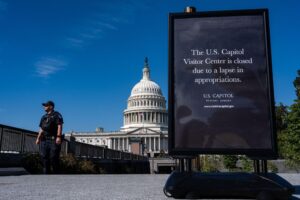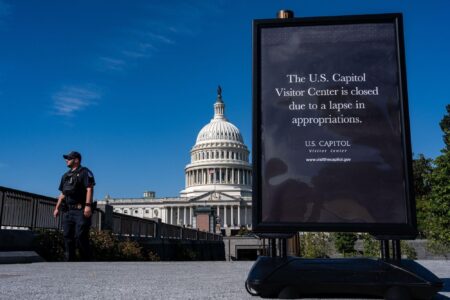Analyzing the Senate Budget Vote: What It Means for TrumpŌĆÖs Policy Agenda and GOP Dynamics
Fractures Within the Republican Party Exposed by Senate Budget Vote
The recent Senate budget decision has brought to light significant ideological splits within the Republican Party, underscoring the challenges the GOP faces in forging a unified fiscal strategy. While some senators champion stringent spending cuts and rigorous budget discipline, others argue for preserving funding in defense and social programs to maintain broader electoral appeal. This internal discord not only delayed the budgetŌĆÖs passage but also highlighted the competing priorities that will influence legislative negotiations moving forward.
Republican senatorsŌĆÖ positions during the vote revealed distinct factions, each with its own vision for the partyŌĆÖs fiscal direction and messaging:
- Fiscal Hardliners: Advocating for deep reductions in discretionary spending to curb government size.
- Centrist Republicans: Supporting moderate cuts balanced with sustained investment in defense and entitlement programs.
- Trump Loyalists: Prioritizing populist spending initiatives and expressing skepticism toward conventional fiscal constraints.
- Party Establishment: Favoring incremental reforms aimed at preserving party cohesion and appealing to a wider voter base.
| Republican Group | Budget Priorities | Effect on Vote |
|---|---|---|
| Fiscal Hardliners | Substantial cuts to discretionary programs | Prevented full budget approval |
| Centrist Republicans | Balanced spending reductions with defense focus | Backed compromise proposals |
| Trump Loyalists | Populist spending, wary of strict fiscal limits | Divided on key amendments |
| Party Establishment | Gradual reforms to ensure stability | Enabled ongoing negotiations |
How the Senate Vote Shapes TrumpŌĆÖs Economic and Foreign Policy Outlook
This Senate budget vote acts as a crucial indicator for the future of Donald TrumpŌĆÖs economic policies. With fiscal backing uncertain, flagship initiatives such as tax reform and infrastructure investment may require adjustment or delay. These developments have broader consequences, influencing market confidence and investor sentiment as the administration balances ambitious growth goals against mounting concerns over the federal deficit.
Internationally, the budget outcome could affect AmericaŌĆÖs stance on trade deals and defense spending. Potential constraints on military budgets might complicate commitments abroad and impact negotiations with allies. Additionally, shifts in foreign aid allocations and tariff policies could signal either a strategic pullback or a more assertive posture on the global stage. Key areas of impact include:
| Policy Domain | Possible Consequences |
|---|---|
| Tax Policy | Postponements or scaled-back reforms |
| Infrastructure Projects | Funding uncertainties leading to delays |
| Defense Budget | Potential freezes or reallocations |
| Trade Relations | Heightened caution and renegotiation risks |
| Foreign Assistance | Reduced funding and strategic shifts |
Obstacles to Advancing Conservative Legislative Goals in a Divided Senate
Despite some recent legislative successes, pushing forward conservative priorities remains challenging amid a polarized Senate environment. Moderates within the GOP resist sweeping budget cuts, while Democrats remain largely opposed to contentious reforms such as entitlement restructuring. The fragmented Republican caucus complicates efforts to build consensus, forcing leadership to navigate between ideological purity and pragmatic compromise.
Additional hurdles include:
- Senate procedural rules: Filibusters and debate requirements that slow or block legislation.
- Economic volatility: Unpredictable fiscal forecasts that complicate budget planning.
- Internal GOP disagreements: Divergent views on the scope and scale of policy changes.
| Challenge | Effect |
|---|---|
| Moderate Republican Opposition | Delays legislation, demands concessions |
| Democratic Resistance | Blocks reforms, causes legislative gridlock |
| Senate Traditions | Enables filibusters, extends debate time |
| Election Cycle Pressures | Shifts focus to short-term political gains |
Successfully navigating these obstacles will require adept negotiation and compelling messaging to unify the party base while appealing to centrists. The coming months will be decisive in determining whether conservative proposals can gain traction or remain stalled.
Recommended Strategies to Bolster TrumpŌĆÖs Political Standing Post-Budget Vote
Following the Senate budget vote, TrumpŌĆÖs political team faces a critical crossroads, balancing efforts to solidify his core supporters with ambitions to broaden his influence within a divided Republican Party. Advisors suggest a dual strategy that combines grassroots mobilization with targeted endorsements of candidates aligned with TrumpŌĆÖs platform. This approach aims to sustain TrumpŌĆÖs prominence and exert pressure on lawmakers regarding fiscal priorities, positioning him as a pivotal figure ahead of the 2024 primaries.
Key strategic recommendations include:
- Concentrate on Senate and gubernatorial contests where budget positions have significant policy implications.
- Utilize media platforms to shape public discourse around budget debates and reinforce TrumpŌĆÖs economic messaging.
- Engage selectively with bipartisan lawmakers to facilitate legislation favorable to TrumpŌĆÖs agenda without alienating his base.
- Invest in data-driven outreach and social media campaigns to boost voter turnout among critical demographics.
| Strategic Focus | Expected Outcome | Timeframe |
|---|---|---|
| Targeted Candidate Endorsements | Forge political alliances | 6 to 12 months |
| Media Engagement | Shape public narrative | Immediate |
| Bipartisan Collaboration | Enhance legislative influence | Ongoing |
| Grassroots Mobilization | Increase voter participation | Next election cycle |
Final Thoughts
The SenateŌĆÖs recent budget vote has clarified the complex dynamics shaping Donald TrumpŌĆÖs policy ambitions and the Republican PartyŌĆÖs internal divisions. These four key insights provide a framework for understanding the legislative and political challenges ahead. As the political landscape continues to evolve, stakeholders will be closely monitoring how these factors influence the administrationŌĆÖs ability to advance its agenda. The coming months promise significant developments as party factions negotiate, and policy priorities are tested.







